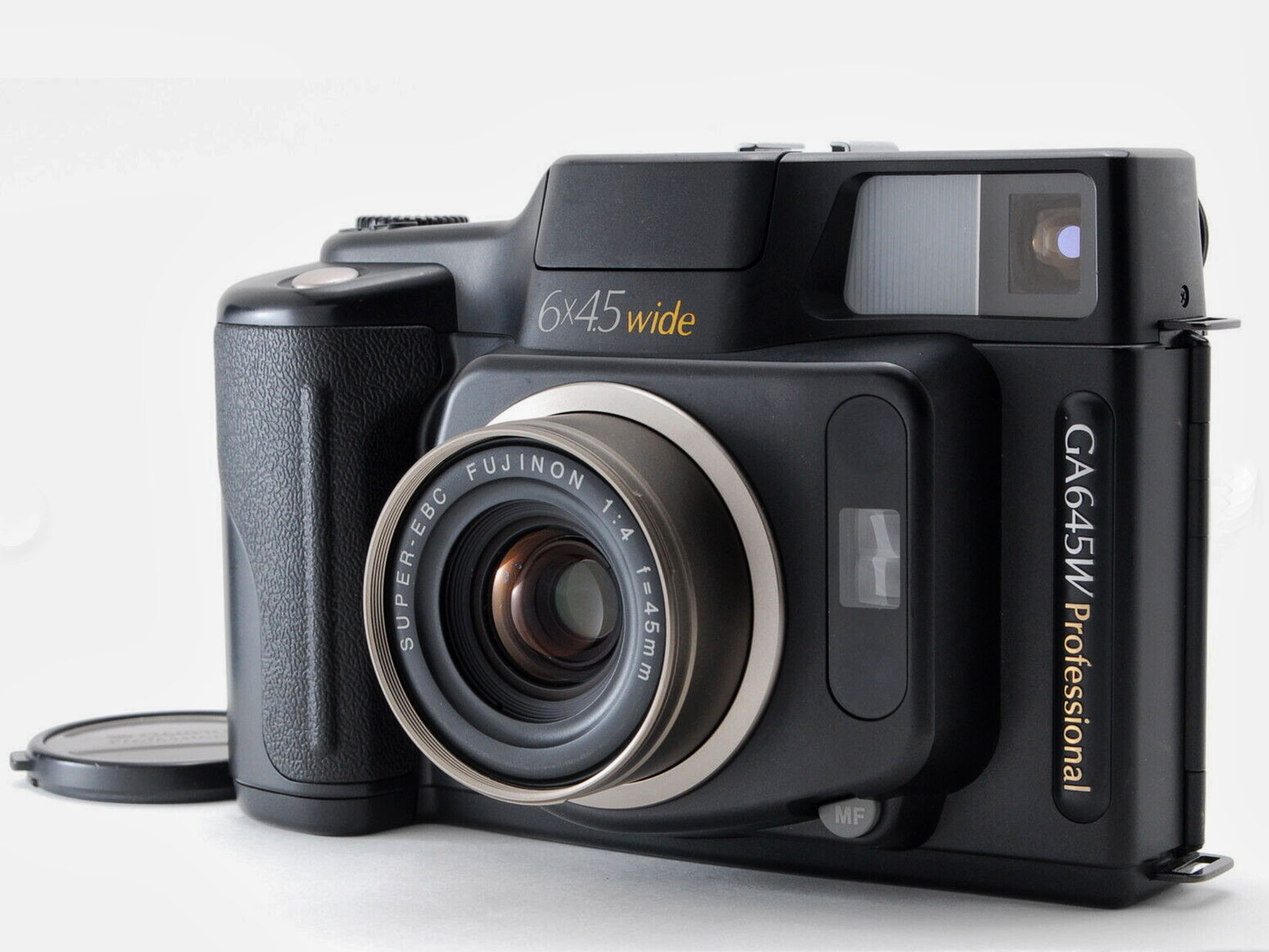As I’ve mentioned before, I am presently coping with some nerve damage in my left leg that was triggered, I am told by my doctor, by a herniated disc. While I continue to slowly improve, I am waiting until I am strong enough to be able to handle this camera’s 815 grams (1.8 lbs) weight.
Today’s Post by Joe Farace
Photography is a way of feeling, of touching, of loving. What you have caught on film is captured forever… it remembers little things, long after you have forgotten everything.—Aaron Siskind
The Fujifilm GA645W Professional is an autofocus medium format camera that was introduced in 1995. It can use 120/220 roll film and captures images using a 645 (6×4.5 cm) image format.
 The GA645W camera uses a Super EBC 45mm f/5.6 lens that has seven-elements in six groups with a minimum focusing distance of 0.7m. The shutter is electronically controlled with speeds of two sec to 1/700 of a sec. but with the aperture range of f/4 to f/9.5 can only go as fast as 1/400 sec. For some reason, smaller apertures of f/11 and f/22 can use the faster shutter speeds. There is a screw-in shutter release cable socket on the right side of the body.
The GA645W camera uses a Super EBC 45mm f/5.6 lens that has seven-elements in six groups with a minimum focusing distance of 0.7m. The shutter is electronically controlled with speeds of two sec to 1/700 of a sec. but with the aperture range of f/4 to f/9.5 can only go as fast as 1/400 sec. For some reason, smaller apertures of f/11 and f/22 can use the faster shutter speeds. There is a screw-in shutter release cable socket on the right side of the body.
The finder has a portrait format orientation instead of the more common landscape format. It is based on a three-glass element reverse Galilean (aka two-element telescope style) design. There is a 93% field of view from three meters to infinity. It has bright lines with moving parallax correction frame that’s based on the focus area. It displays aperture, shutter speed, focus distance (m or ft), as well as exposure meter information.
Exposure Control
Exposure control is handled by a center-weighted system using a silicon photo diode. It has a range of 3 to 19 EV (at ISO 100). It is not a TTL type system, but a TTF (Through The Finder) system. The meter settings supports film speeds of 25 to 1600 ISO in 1/3 stop increments. Exposure modes include (P) programmed auto, (A) aperture priority, and (M) manual exposure mode. A bulb mode is also available in manual exposure mode. There is a built-in pop-up flash with a GN of 12, something you won’t see in many medium format cameras. There is also a accessory hot shoe for external flash. Exposure and date time information can be imprinted on the film outside the photo area.
The film transport is motorized with automatic film advance that also supports fully automatic film loading. Unlike most 120 film-based cameras, this does not require matching the backing paper start mark to a body indicator for first frame loading. This is done by a reflector sensor in the film chamber that detects the presence of film or paper. The main up and down setting dial can be used to rotate the take up spool for easier leader insertion. Close the back and the camera detects the first frame. A electronic warning beep is emitted on the last frame of the roll.
When the last exposure is complete, the film is wound automatically to the take up spool. The camera is able to capture 16 exposures on 120 film, or 32 exposures using 220 film, which is moot since nobody makes 220 these days. The approx number of frames shot on the camera can be displayed by pressing and holding the exposure comp button while camera is off and switching to ISO, which seems awkward to me. The LCD display located on the top has information such as exposure counter, shutter, aperture, ISO, 120 or 220 film, battery, flash, exposure comp, self timer, MF mode, date, time, focusing distance and total frame count.
The camera is powered by 2x CR123A battery that are located on the base of the hand grip. The battery has a capacity of approx 3000 shots without flash, and 600 with flash (50% intensity.) I’ve seen the camera on sale on eBay for between $500-1000. Many thanks to Matt Staver for the loan of the camera. Look for a field test, real soon now.